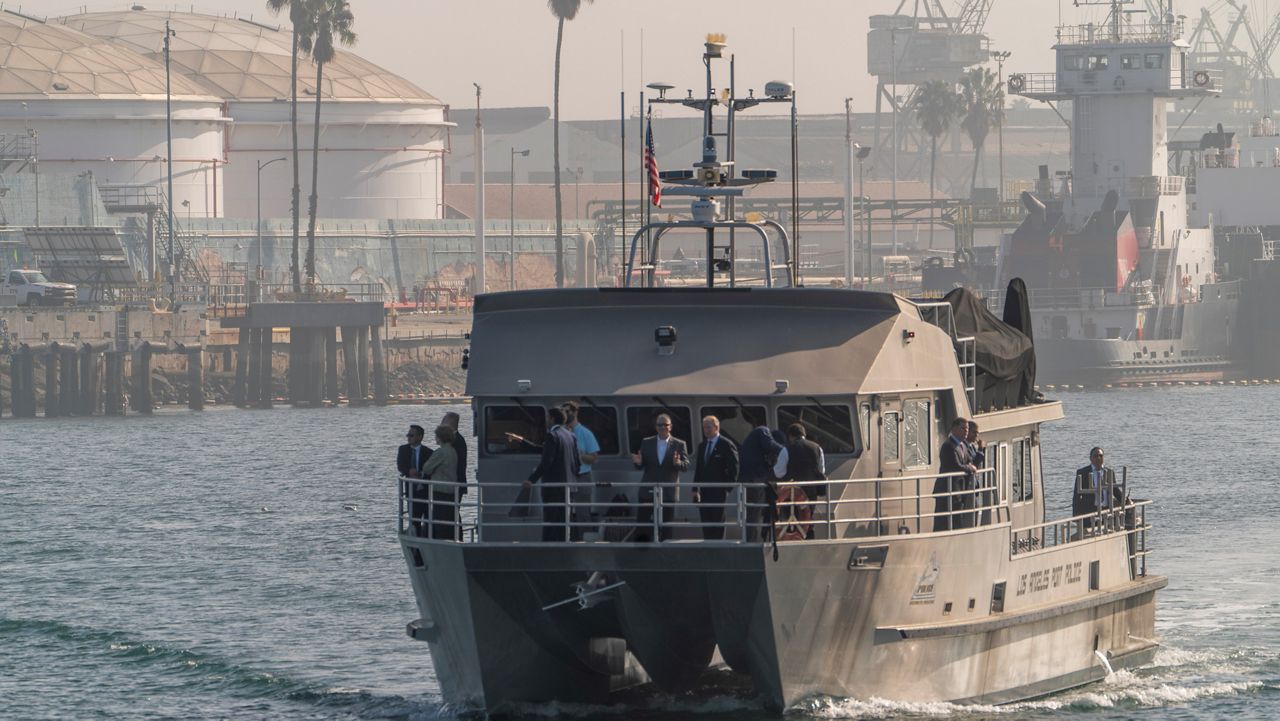LOS ANGELES — Even with COVID lockdowns in Shanghai, China, and a darkening economy in the U.S., the Port of Los Angeles continues to handle record-breaking amounts of cargo. The San Pedro port logged its third best month ever in its 115-year history in May, Executive Director Gene Seroka reported Tuesday.
The port handled 967,900 containers last month, following only the 1,012,048 it handled in May 2021 and 980,729 containers in October 2020, when the pandemic-induced import surge first began.
“Importing companies continue to replenish inventories and keep up with the American consumer’s buying demands,” Seroka said. Despite the U.S. inflation rate reaching a 40-year high of 8.6% in May, “Consumer strength is strong.”
Seroka said Americans have been buying more furniture, appliances and fixtures to update their bathrooms and kitchens during the pandemic and that factories in China have so far been keeping up.
“We’ve witnessed no precipitous drop with the lockdowns in Shanghai,” Seroka said, noting that the Chinese lockdowns that began 12 weeks ago have had little discernible impact on the number of ships headed to San Pedro. Forty-seven ships are currently headed to the port. “With the China government and ports prioritizing the long-haul cargo, especially that headed here to Los Angeles, the volume remains consistent.”
Since early last year, when the Port struggled to handle the deluge of cargo coming in from Asia, the Port of LA has made significant strides in reducing the number of ships that are forced to stage 150 miles away from shore while the marine terminals make room. As of Tuesday, Seroka said there are 27 ships idling 150 miles away compared with 109 during the second week of January.
Exports from the U.S. out of the Port of LA increased for the first time in more than three years in May, Seroka said. The number of empty containers heading back to Asia also dipped slightly, reversing longstanding trends.
Rail operations, however, continue to be problematic. Calling them “our biggest and current challenge,” Seroka said there are over 29,000 rail container units on the ground right now, 15,000 of which have not moved for at least nine days.
During pre-pandemic times, the number of containers waiting to be shipped by rail would have been 9,000 units, with none waiting nine days for a ride. The average rail dwell time on marine terminals is now 7 1/2 days, which is three times longer than before the import surge began.
Trucks are also moving more slowly than they did before Americans began their COVID buying spree. Containers and chassis are now waiting nine days before they are moved by truck to a warehouse. Seroka said a normal truck dwell time is between three and four days.
Warehouse space is also near capacity with just 0.5% availability for the 2 billion square feet of warehouse storage in Southern California, from LA County to the Inland Empire.
